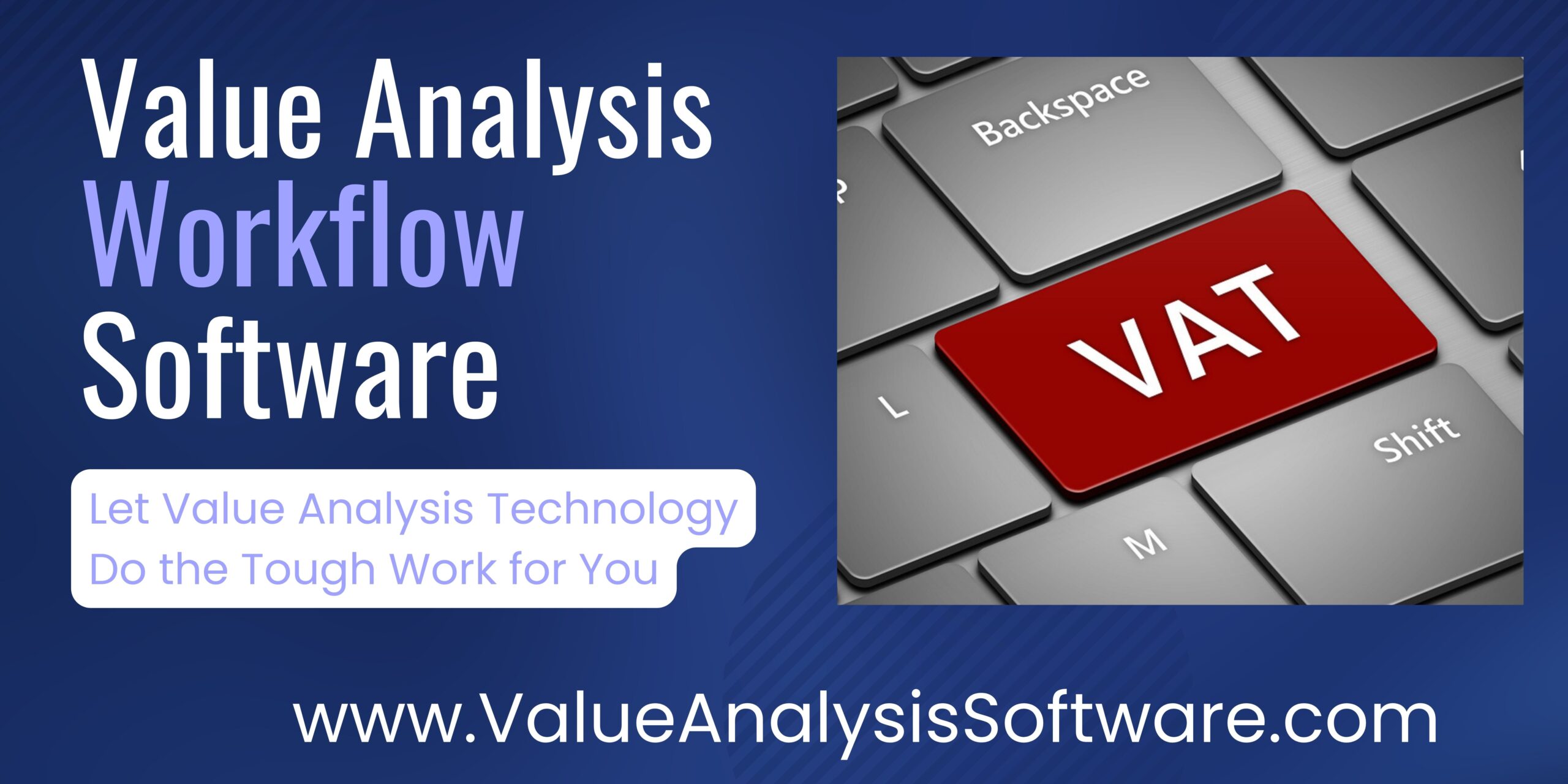This is a very different and exciting Value Analysis Leadership Interview that I conducted with Vince Matozzo and Shawn Kenavan who are the principles of the Paradigm Venture Group. Vin and Shawn have been knee deep in working with healthcare organizations to help solve many of their challenges and disruptions but also aiding them in their strategic visions for the future. They are helping organizations to shape a whole new future based on technology with smart tech like artificial intelligence, machine learning, and so much more. Let’s learn more from Vin and Shawn.
HVAUM: Tell us a little bit about your history in the supply chain and value analysis worlds.
VM: My background was first as a buyer in procurement, in positions in and out of healthcare. I was trained in Lean/Six Sigma through GE and attained a master black belt status. All along I was always really curious about applying that to my role in procurement and in supply chain. Supply chain turned into an accidental career from my original path of forensic science. Those skills have come in handy in my roles as a Chief Contracting Officer, as a Director of Strategic Sourcing, and as an Executive Director in supply chain. I not only worked in the sourcing and contracting side but also in transforming multiple supply chain value analysis groups. I focused on creating interoperability from the receiving dock to the C-suite table, whether it be developing metrics, giving those tap times, and then evolving with the technology to further the supply chain to C-Suite collaborations.
I am a huge proponent of applying technology tools to the supply chain like Microsoft Excel and Minitab all the way through Crystal Reports with the goal of taking workflow, project management, and collaboration software and programming these to new levels of interoperability in areas within healthcare that have taken a very long time to evolve. For me, it was being passionate about the way we automated work getting done, whether it was an expiring contract report or a back-order report, connecting that across those verticals, and creating a layer of business intelligence that has served a few of the organizations that we’ve been fortunate enough to work with.
SK: I started out working with one of the top medical distributors for about 16 years, wearing many hats. This ranged from operations to director of warehouses on the East Coast and the Northeast, managing primarily the New York Boston areas, from a distribution warehouse operational standpoint. My work continued into the corporate world in the distribution business where we started a consultant team. This team was assigned to the top 25 accounts with the focus on implementing processing improvements. The goal was to work with larger accounts and make things more efficient. We wanted to understand what was driving the lack of response, the lack of results, that really impacted the overall operational health and the relationship between a customer and a distributor. I worked in this consulting role for about eight years. It was a great learning experience for me sitting on the fence, listening to the customer, but also really understanding the dynamic and the challenges that a distributor faces.
One of the biggest takeaways was the fact that sales are made, but when you go to implement them and apply the logistics, the technology, and the processes, the overall performance is not there. How do you manufacture those results in an operating environment that does not exist? So, the big disconnect is the fact that the distributor’s job traditionally stops at the dock doors but there is much more that can be done. Recognizing this, I formed my own consulting firm and worked with large healthcare organizations on distribution implementations and establishing/improving operational processes. The big win is bringing together supply chain, value analysis, frontline staff, and clinicians to expose them to the challenges that are being tackled as well as help them understand the distribution dynamics. Then we create transparency and visibility upstream and downstream in distribution of supplies at organizations like Stanford Health. My engagements have ranged from distribution implementations to fitting up a new hospital to far location, storeroom, and other inventory and logistics solutions.
HVAUM: You are a champion of utilizing cutting edge technology to close the gaps that are disrupting the healthcare supply chain that are causing major cost, quality, and performance issues. Can you explain how technology can solve all these issues?
SK: From my perspective, this cutting-edge technology helps us think of supply chain and processes as an assembly line. There’s a project or task that starts with Step A and ends with Step Z, right? If you can envision, Step A hands off to Step B, Step B hands off to Step C, Step C hands off to Step D, and so on down the line. It’s truly like an assembly line at a manufacturer. Think of Toyota. You start with the bolts, steel, rubber, and everyone hands it down. Everyone has their responsibility within that process or work stream. The technology that we’ve created helps us establish line of sight to when and where there’s a defect in those handoffs. In real life, that process goes from purchasing materials to value analysis, to analytics, to support staff to clinicians. That’s one task in a series of probably a hundred deliverables.
A great analogy to explain the technology we create is, “We know the plumbing, and now we see where the clogs are.” Now we know what is occurring to prevent a task from being completed. Then we can dive into the root cause analysis with real-time analytics in place that flag the cause of a bottleneck. For example, this will help encourage our clients to bring in a substitute product two weeks earlier to circumvent this bottleneck affecting clinical outcomes (procedures cancelled, clinicians not able to care for patients, etc.). Prior to this type of technology, it was a black hole. You didn’t know where anything was sitting or why it was sitting there, let alone know how to address it.
VM: It really starts with solid processes and those core tenants of reviewing the workflow, the cadences, the roles and responsibilities, and who’s accountable, consulted, informed. What are those priorities? And then how do you automate that information strategically? How can you find the best way so you can efficiently kick off workflows to minimize the minutia and put the humans back where they belong, creating those value-added decisions and not necessarily addressing the white noise? I think that’s critical, but you must be very intentional in creating that roadmap for interoperability. Then you really must have the outcomes and your key business metrics in mind. The challenge that has always been with technology, whether it’s in or out of healthcare and supply chain or any industry, is truly visualizing that complex synergistic system, that neural network from end to end.
HVAUM: Could you give us an example of how technology has helped make supply chain more efficient?
VM: The interoperability of connecting what I call the neural network, or in simple terms, all the data points and silos in supply chain. It all comes down to understanding your technology and your current reporting and how to create the linchpins that focus on interoperability. Yes, these are dashboards, reports, and tools that are put in place to understand how your interoperability works and then attaching that to your care signature. This will clearly identify what you do for the allocations, how you handle the disruptions, the supplier consolidations, the recalls, etc. All the things that affect your best laid plans and your appropriately priced contracts that ultimately are now going to affect clinical education, material handling, potential case start times, as well as impact patient care workflow. For example, look at clinical integration. You know the quality, cost improvement, outcomes, all those end tails. It’s about having that technology Swiss Army Knife and applying the best tools to the challenge, whether it’s your data governance strategy or formulary control. It’s enabling your workflows and business intelligence, understanding how you make all those decisions and how that will affect your value, your cost, your additional incentives, your outcomes, or even your labor productivity, because all of those things are ripe for disruption.
HVAUM: How can a technology-optimized supply chain help supply chain & value analysis professionals?
VM: We like to call it reinforcing a lot of the cycles or the series of success. It helps you do what you’re doing more consistently by understanding the up and downstream effects. Plus, we’re big proponents of accountability and creating that centralized, connected structure. What does that mean? It means holding a monthly business review internally with supply chain to review the key performance indicators that matter. Then you can fine tune your goals on an ongoing basis into how you want to be performing versus those that may just look at KPIs once or twice a year. Get into those fill rates, contract pricing, accuracy reports, the true additional incentives, inventory flow. Whatever it is, you have those outcomes and those hack scores that are there. Then create that connected enterprise with accountability and efficiency so that people can cut through the white noise, clear the smoke, and break the mirrors, but ultimately be reporting out on the same page. Constantly see where you could synchronize and create a cadence around those deliverables together.
SK: Technology comes down to operational workflows and what it can do for you and your frontline staff such as physicians, nurses, supply chain techs, etc. We deploy a piece of technology that everyone uses every single day. Without a synchronized technology, can you imagine piecing together all the different actions or decisions from purchasing? Try sourcing widget ABC which is coming in direct after value analysis has approved it as a substitution. You could use these substitution analytics from the VA approved requirements set to create an image on the technology portal, which has been done pretty much by phone previously. Basically, your nurses or clinicians can say, I need a product, or an update on a product, and you can go in and type the centralized informatics number. That informatics technology becomes the common denominator that shows the history of the product and what is currently happening with it.
Purchasing is getting this direct estimated time of arrival which is, Monday, January 31st. The previous product had a red cone, but the substitute has a blue cone, and there will be a change to the blue cone now. The technology shows all of this, instead of someone having to go back, contact customer service, wait on the phone, email purchasing, wait for purchasing to respond, and reply on all these emails. The point of view is right there on their phone, at the touch of a computer, in a portal, in a queue, with specific information. That’s how I see how it’s going to drive value to the frontline users, creating a holistic transparency to what’s going on with specific items that they need to know about.
HVAUM: What should supply chain leaders be doing in order to move their organizations to the next level of technology optimized supply chain?
VM: Supply chain traditionally hasn’t had that central control power concept for a long time. It was a series of disparate assets in network that didn’t necessarily communicate your stockouts and material reports from centralized or decentralized purchasing. We didn’t know it didn’t make it to the dock, what was happening to the deliveries, let alone beyond the dock. Healthcare systems want control back which is critical to have. Creating that network of interoperability offers so much efficiency and really helps you map those bottlenecks, and the solutions will naturally evolve. Those clogs will be reported out from what happens as it works through the system. By using technology to map that, to make that more efficient, to schedule, to document recurring solutions, and to apply those guardrails and opportunities, puts the human back in control in a value-added environment. Supply chain can then focus on utilization, looking at the outcomes instead of resolving the 97 back orders that they are getting hit with on a day-to-day basis.
HVAUM: Are there any limits to what supply chain can accomplish with advanced technologies?
SK: The only limits are what organizations put on themselves. That’s from a budgetary, financial, or any possible kind of concept. I would love to see organizations take a blueprint of a health network and lay out the processes, lay out the technologies, lay out the different annexes that have been right. This blueprint will act as a living, breathing operational clock. Now, walk through how everything flows and let someone visualize and see that most times there are line staff repairing the broken bridges and everything else from the bottom up. But imagine a health network’s CFO whose forward thinking could visualize what the next iteration of processes looks like. Then take those components, the technology, the education, and apply them to their world. There’s really no roadmap like that today in this field that anyone could point to and say, “I could kind of Frankenstein this,” or, “There are some good processes to model.” You have the large university teaching organizations of the world and a few forward-thinking large health systems, but there are not many organizations you could point out to say they’re doing it great.
How do you create that possible blueprint and share it with the world? What’s it going to look like? In an agile and constantly evolving environment, it’s never “set it and forget it.” It needs to constantly be evolving and moving forward.
Articles you may like:
Is Your Healthcare Organization Really Practicing Value Analysis?
Healthcare Supply Chain: The Worst Number in the Savings Game is One





